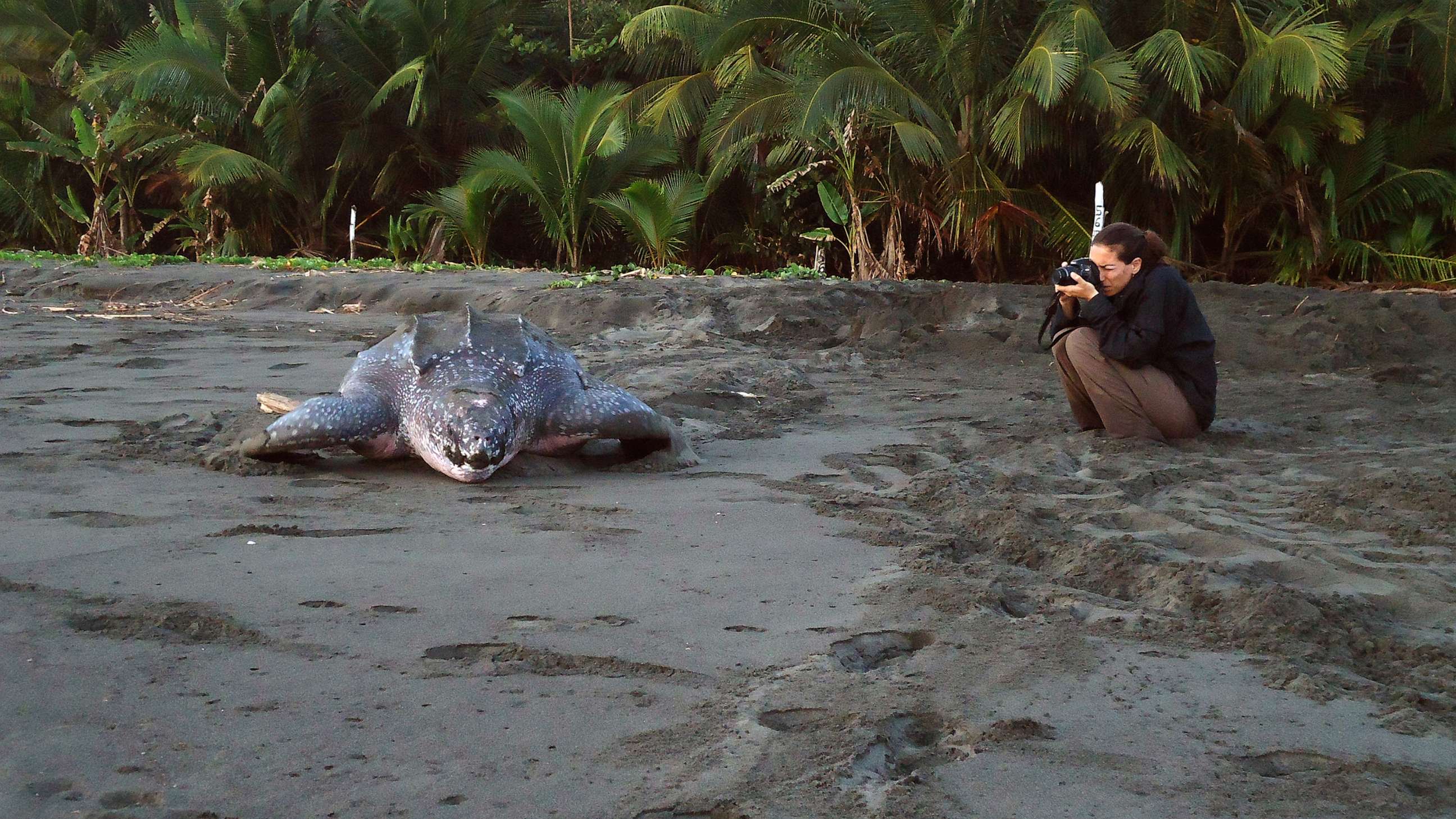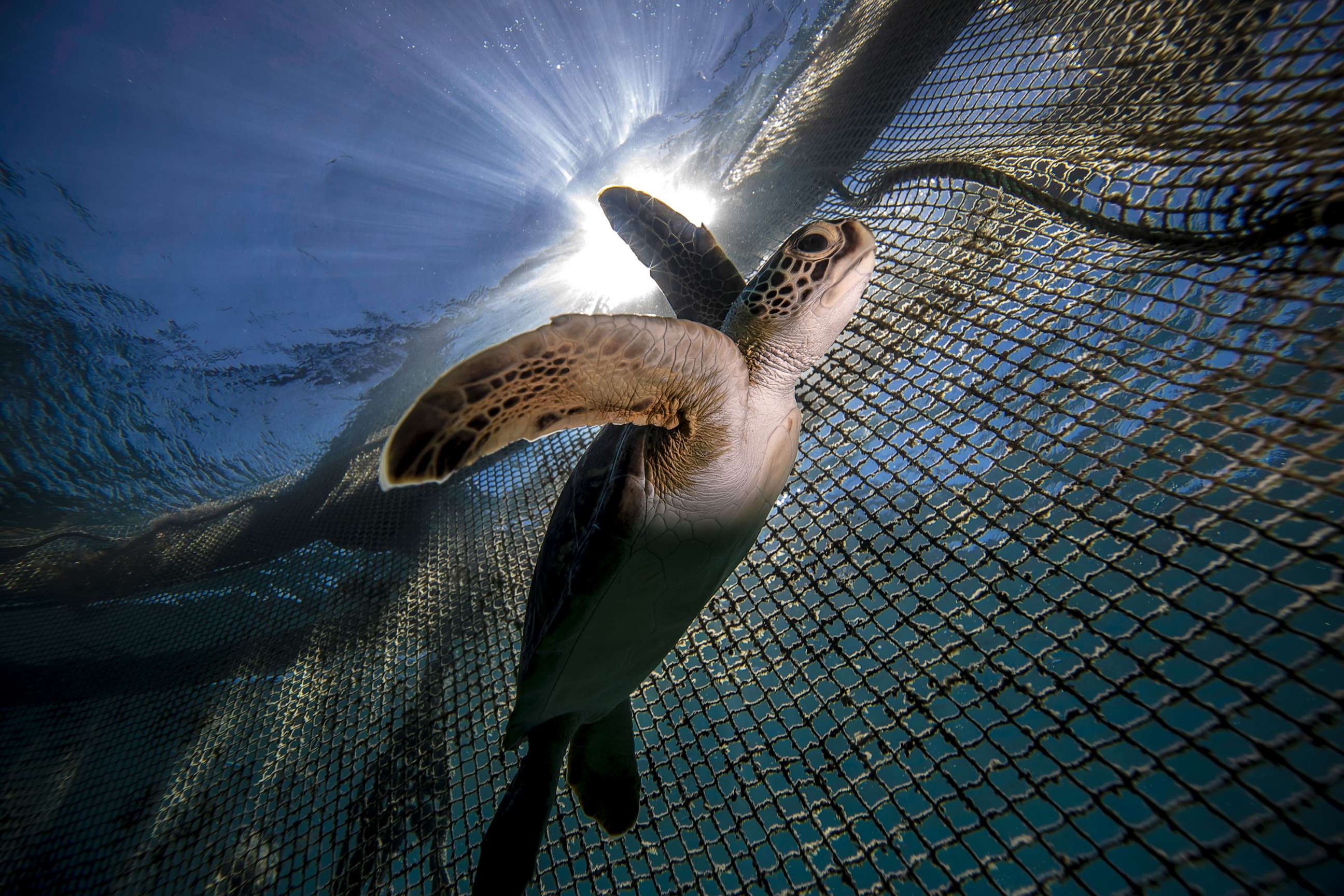Sea level rise could wash away turtle breeding grounds around the world, researchers say
Sea level rise is likely presenting more threats to an already vulnerable marine species, according to new research.
As waters from the ocean push further and further onto shore, the flooding is washing away the nesting sites for sea turtles in places like the United States, Australia, Costa Rica and the Dominican Republic, according to a study published Thursday in Scientific Reports.
Researchers estimated the probability of flooding under moderate and high greenhouse gas emission scenarios could impact 2,835 sea turtle nest locations within seven breeding grounds between 2010 and 2100. They found that under a moderate emissions scenario, breeding grounds located on flat beaches were most vulnerable to flooding -- with 100% likelihood of flooding of nests in Raine Island, Australia; Saona Island, Dominican Republic; St George Island, Florida; and Mondonguillo beach, Costa Rica, according to the study.
Flooding of nests in some those areas are expected by 2050, the researchers said.

Nests in Raine Island and Saona Island will likely be "completely vanished" in the next several decades, Marga Rivas, a biodiversity and nature conservation researcher at the University of Cadiz in Spain and author of the study, told ABC News.
In Sint Eustatius, a Dutch island in the Caribbean, 50% of leatherback, 18% of hawksbill and 13% of green turtle nest locations could be vulnerable to flooding by 2050.
Within breeding grounds used by multiple turtle species, leatherback turtle nests may be particularly vulnerable to flooding due to their tendency to nest in open areas near the high tide line, according to the study. Hawksbill and green turtles tend to nest at higher elevations closer to dunes and steep cliffs, the researchers said.

As female sea turtles return to nest on the same beaches they hatched on, sea level rises could lead to many turtles nesting on flooded beaches, which could negatively impact the number of turtles hatching, according to the study.
Coastlines in places like Costa Rica and South America have been shrinking significantly in the last several years, Rivas said. The fact that turtle nests will likely disappear in alarming rates on several islands so far away from one another prove how widespread and dangerous the threat is, she said.
Rivas also warned against relocating turtle nests to higher ground because without temperature control, this well-meaning action could cause skewing sex ratios -- causing all of the eggs that hatch to be females. The temperature of the developing eggs determines whether the offspring will be male or female.
"They put it anywhere, and they are producing 100% of females in those places," Rivas said.
Sea level rise is adding to the severe threat sea turtles already face by overfishing and plastic ingestion, Rivas said.
"We need to help protect their nesting population because without those, with the high mortality they're suffering, it's impossible to to keep their species for the future," Rivas said.

Loggerhead turtles are listed as vulnerable and multiple subspecies of leatherback turtles are listed as critical on the International Union for Conservation of Nature's Red List of Threatened Species.




